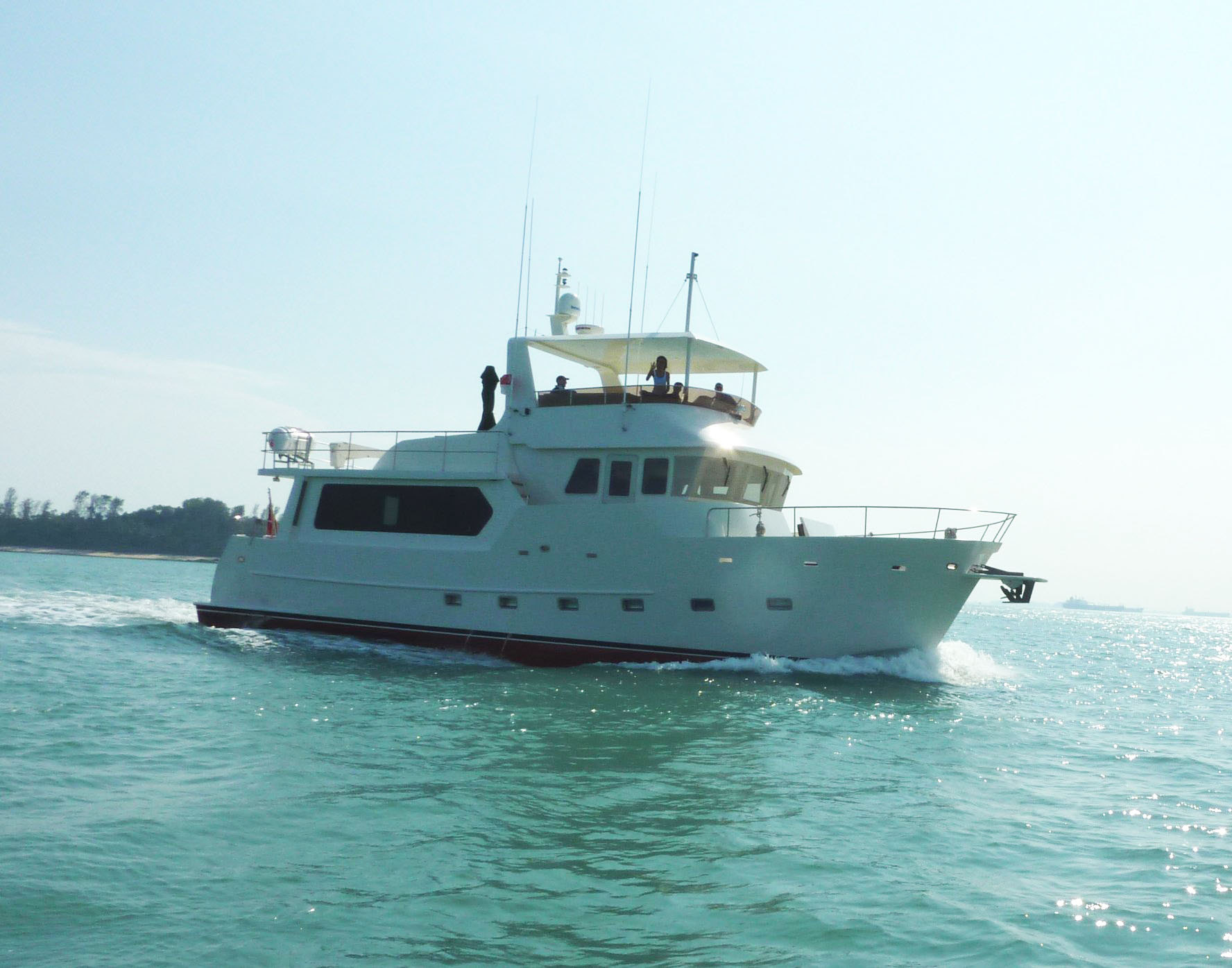Address
11,Cove Drive,
One 15 Marina Club,
Singapore 098497
Phone
+65 9155 4060
Trawler yachts, otherwise known as recreational trawlers or expedition yachts, are a class of pleasure boats that looks similar to fishing trawlers. But don’t let their appearance fool you; these boats are yachts and are perfect for cruises or day tours.
The primary difference between a typical fishing trawler and a trawler yacht is how the former class of vessels always has full displacement hulls so they can carry more load, while recreational yachts are often built with semi-displacement hulls because they typically carry less load.
With the rising costs of fuel consumption today, displacement hull models of trawler yachts are becoming more popular to many buyers due to their lower need for fuel. The downside to this is that displacement models are slower (cruising speed is typically seven to nine knots depending on the boat’s length, while the maximum speed reaches 10 to 12 knots).
Semi-displacement hull designs, on the other hand, can generate speeds from 14 to 20 knots, but require more fuel to operate.

One of the best things about recreational trawlers is how they don’t require a large engine to operate. For example: a 42 ft boat can operate with an 80 hp engine, and it won’t even use that much power to cruise; about 25 hp for the necessary speed will do.
Due to their nature of being leisure craft, trawler yachts are often also subject to fashion. This would depend upon the taste of the designer; some expedition yachts, for example, have offset deckhouses or raised pilothouses.
Recreational trawlers are also subject to fashion. For example, many USA production recreational trawlers have a style that includes features such as a raised pilothouse or offset deckhouse.
Another popular feature is the “Portuguese bridge”, a style that consists of a walkway placed behind the foredeck whose purpose is to deflect the green water from the foredeck up over the boat’s structure top rather than slamming against the forward windows of the pilothouse.
Trawler yachts vary in length, some as short as 35 feet while others can be as long as 60 feet. Many of them are designed with regional and international long-term cruising in mind, which is why they also often come with large fuel tanks.
Most trawler yachts also include amenities such as stocked kitchens, living room electronics, appliances and other equipment that makes the stay in the yacht comfortable; this is why expedition yachts can also function as liveaboards.
Usually, trawlers have a single-engine, though twin-engine installations are also available from some builders. They have a large fuel capacity. Fuel range is normally 1,500–3,000 miles on smaller vessels, even greater for those over 45 ft (14 m) in length. When combined with the slower speeds of a displacement hull, these features give such vessels far greater range and economy than similarly sized planing boats. A large engine room under the main cabin is another feature of true cruising trawlers. Many also include a diesel generator of 5–20 kW to power domestic appliances, bow thrusters, dinghy cranes, and similar equipment.
A good example of this is the 2009 Bruce Roberts TY260 65’ Trawler Yacht, which was designed with all the creature comforts of home in mind to make it an effective liveaboard or a long-voyage leisure craft.
This yacht consists of a saloon with pop up 48″ TV and surround-sound, fully fitted large galley, including, dishwasher, gas hob, electric oven, microwave, coffee maker, fridge freezer, wine fridge and a reasonable amount of storage.
If you are looking for a boat that offers an apartment experience, but with a go-anywhere capability, check out this 2009 Bruce Roberts TY620 Trawler Yacht “Blue Steel”.
